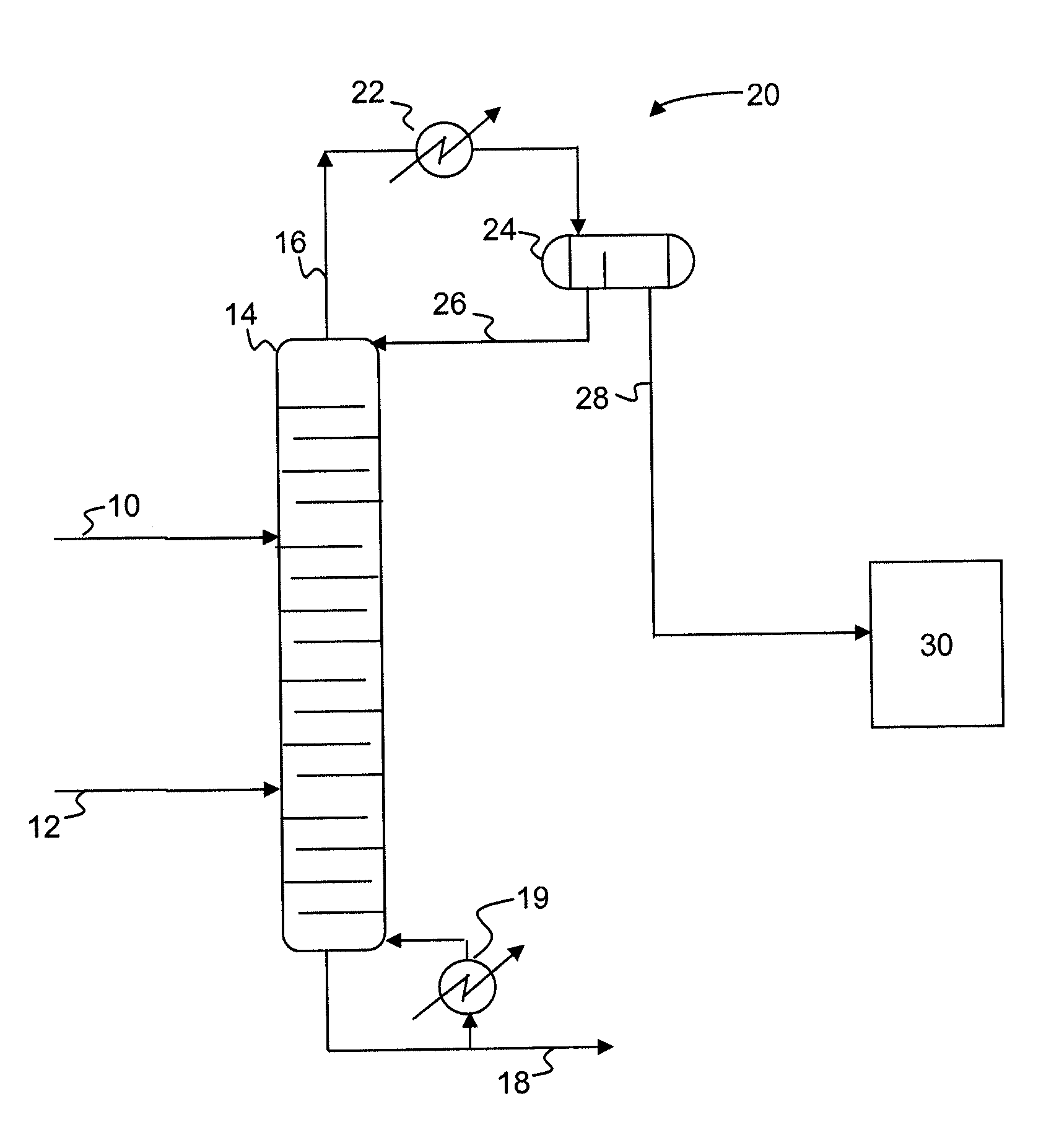Process for producing epoxides
a technology of epoxide and process, applied in the direction of chemistry apparatus and processes, separation processes, organic chemistry, etc., can solve the problems of hydrolysis loss not only affecting the yield of epoxide, but also the cost of wastewater treatment and capital investment, and the design of the phase separator is poor
- Summary
- Abstract
- Description
- Claims
- Application Information
AI Technical Summary
Benefits of technology
Problems solved by technology
Method used
Image
Examples
examples
[0030]A dichloropropanol feed (72% 1,3-dichloropropanol, 3% 2,3-dichloropropanol, 5% hydrochloric acid, and 20% water, by weight) is reacted with a 20% sodium hydroxide aqueous solution in a pipe mixer which provides 4 seconds of residence time. The temperatures of the feeds are controlled to achieve a temperature of 60° C. in the mixer. The effluent from the pipe mixer is fed to a distillation column operating at an overhead pressure of 300 millibar. The distillation column consists of 7 trays on top followed by 6.4 meters of packing below. The overhead system consists of a condenser with a decanter to phase separate the organic and aqueous phases. The aqueous phase is refluxed back to the top tray of the column. The feed to the column enters on the 5th tray from the top. The column is operated at an aqueous reflux to dichloropropanol feed mass ratio of 1.0 to 1.2. The aqueous reflux has a residence time of 1 hour in the overhead system before being returned back to the column. Dif...
PUM
| Property | Measurement | Unit |
|---|---|---|
| temperature | aaaaa | aaaaa |
| residence time | aaaaa | aaaaa |
| temperature | aaaaa | aaaaa |
Abstract
Description
Claims
Application Information
 Login to View More
Login to View More - R&D
- Intellectual Property
- Life Sciences
- Materials
- Tech Scout
- Unparalleled Data Quality
- Higher Quality Content
- 60% Fewer Hallucinations
Browse by: Latest US Patents, China's latest patents, Technical Efficacy Thesaurus, Application Domain, Technology Topic, Popular Technical Reports.
© 2025 PatSnap. All rights reserved.Legal|Privacy policy|Modern Slavery Act Transparency Statement|Sitemap|About US| Contact US: help@patsnap.com



